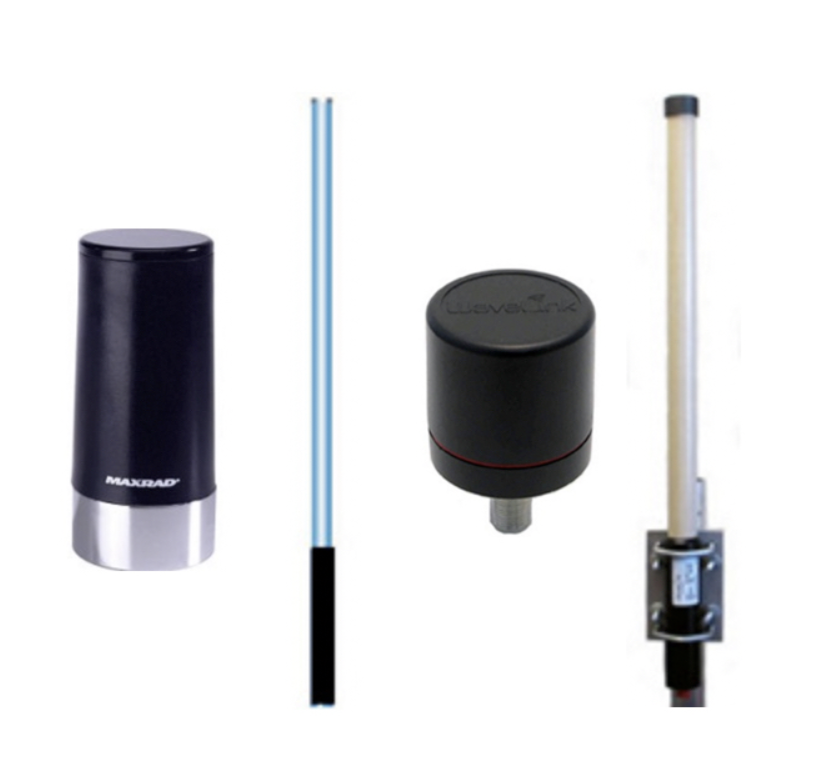Omni Antennas

Omnidirectional antennas, or omni antennas, are built to send and receive signals in all horizontal directions. They're really good at giving you a signal no matter where you're situated around the antenna—they just don't work very well if you try and use them behind or underneath the antenna. Because of their reliable radiation patterns, which are often supported by an even better radiation pattern in the antenna's feed, omni antennas are useful for applications requiring not just adequate signal coverage but also evenly distributed signal strength over a relatively wide area.
Although omni antennas typically have a lower gain than directional antennas (which are known for their higher gain), they are designed to radiate signals over a 360-degree area. This is perfect for covering the kinds of services you find in the MHz range, like FM radio or cellular networks, because those services tend not to need the kind of gain you get from an antenna that's focused in one direction.
Omnidirectional antennas are critical components in today's communication systems. They are mounted on a variety of platforms and cover a range of functions in any number of portable and fixed devices. They deliver consistent power distribution along the horizontal line, providing reliable signal coverage to the horizon from their central mounting point. Yet, no matter the platform or the way an antenna is tailored to a particular application, there are two basic features that all omnidirectional antennas share. Efficiently maintaining and broadcasting signals is essential for ensuring that users of fixed and portable devices experience dependable service and are not cut off by failures in any number of communication-system components.
FAQs
What is the antenna gain and radiation pattern of an omni directional antenna?
The antenna gain of omni directional antennas typically ranges from 2 to 9 dBi, and the omnidirectional radiation pattern is doughnut-shaped, providing 360-degree horizontal coverage with minimal vertical radiation.
Antennas: Omni vs Yagi
Omni Antennas can pick-up signals coming from all directions. They are most commonly used for signal reception over a large area where the potential location of any incoming signal's transmitter varies. Therefore, unlike Yagi antennas, Omni antennas do not need to be pointed in a particular direction. Each specific antenna has a gain rating or dBi (decibel isotropic) number which coincides with the performance of the antenna. The higher the dBi rating, the larger area covered.
Advantages and Disadvantages
• Easy setup and install
• Can send and receive signals from multiple locations with just one antenna
• Limited on the distance it can communicate
• Not a great option from areas with poor signal strength

